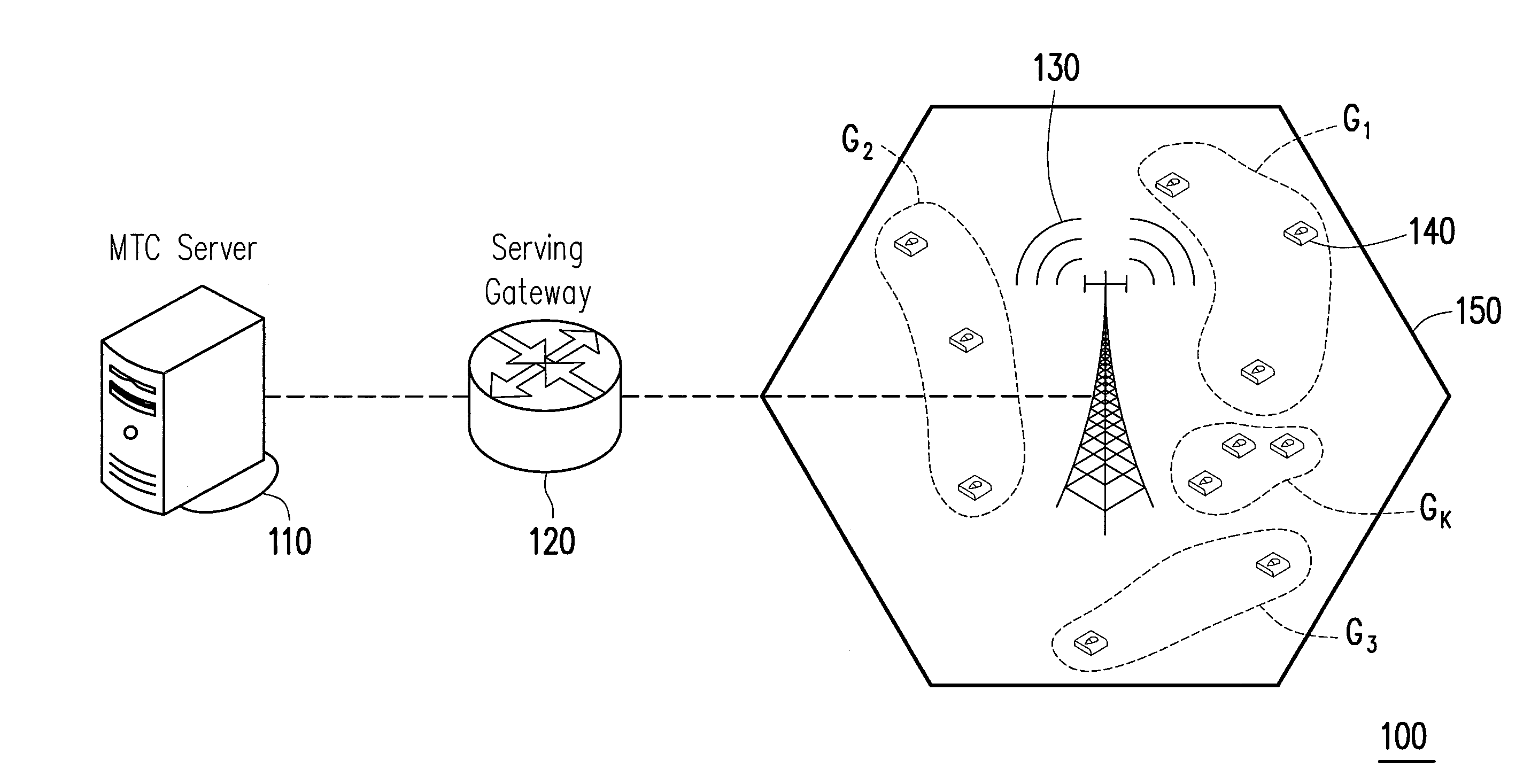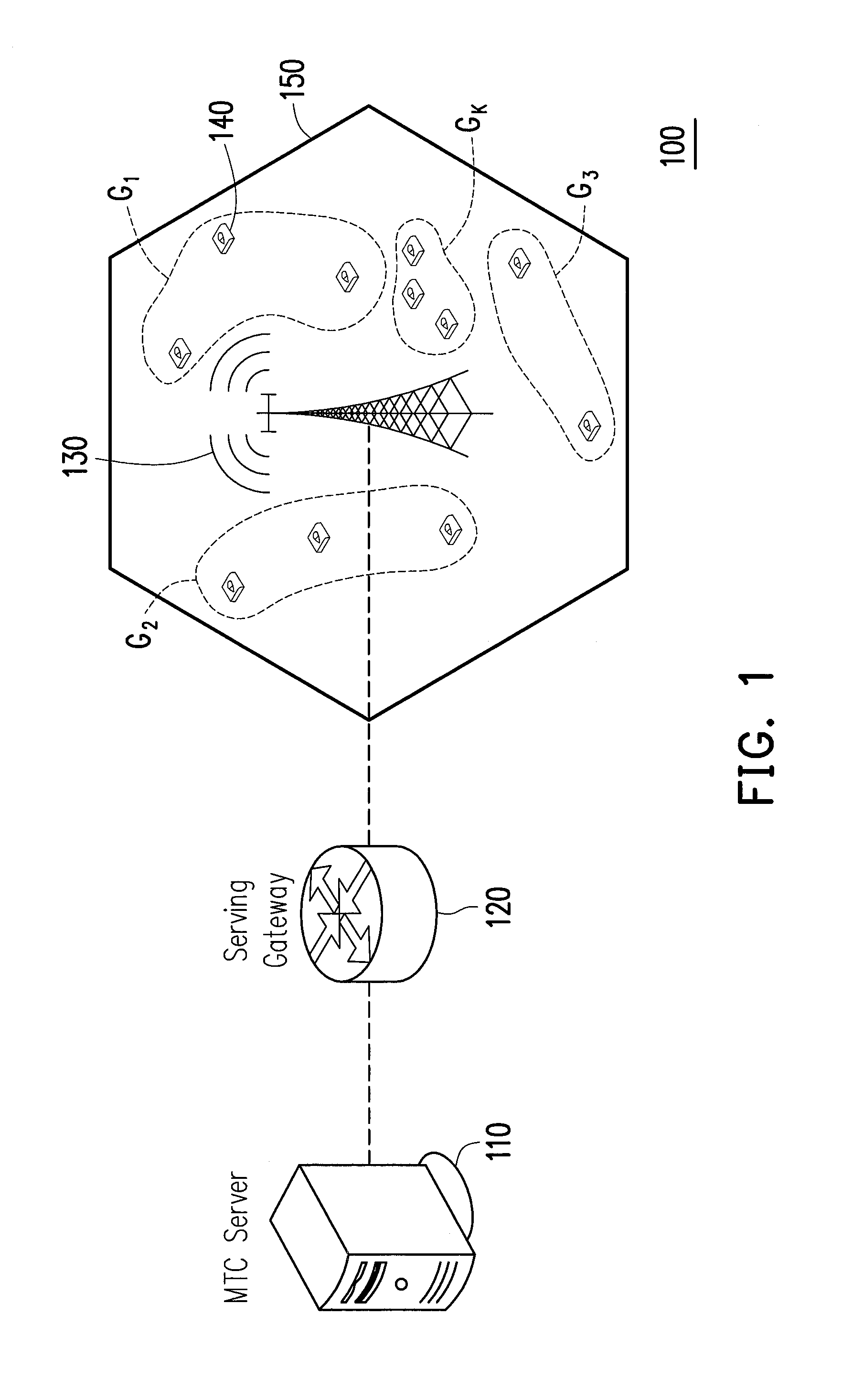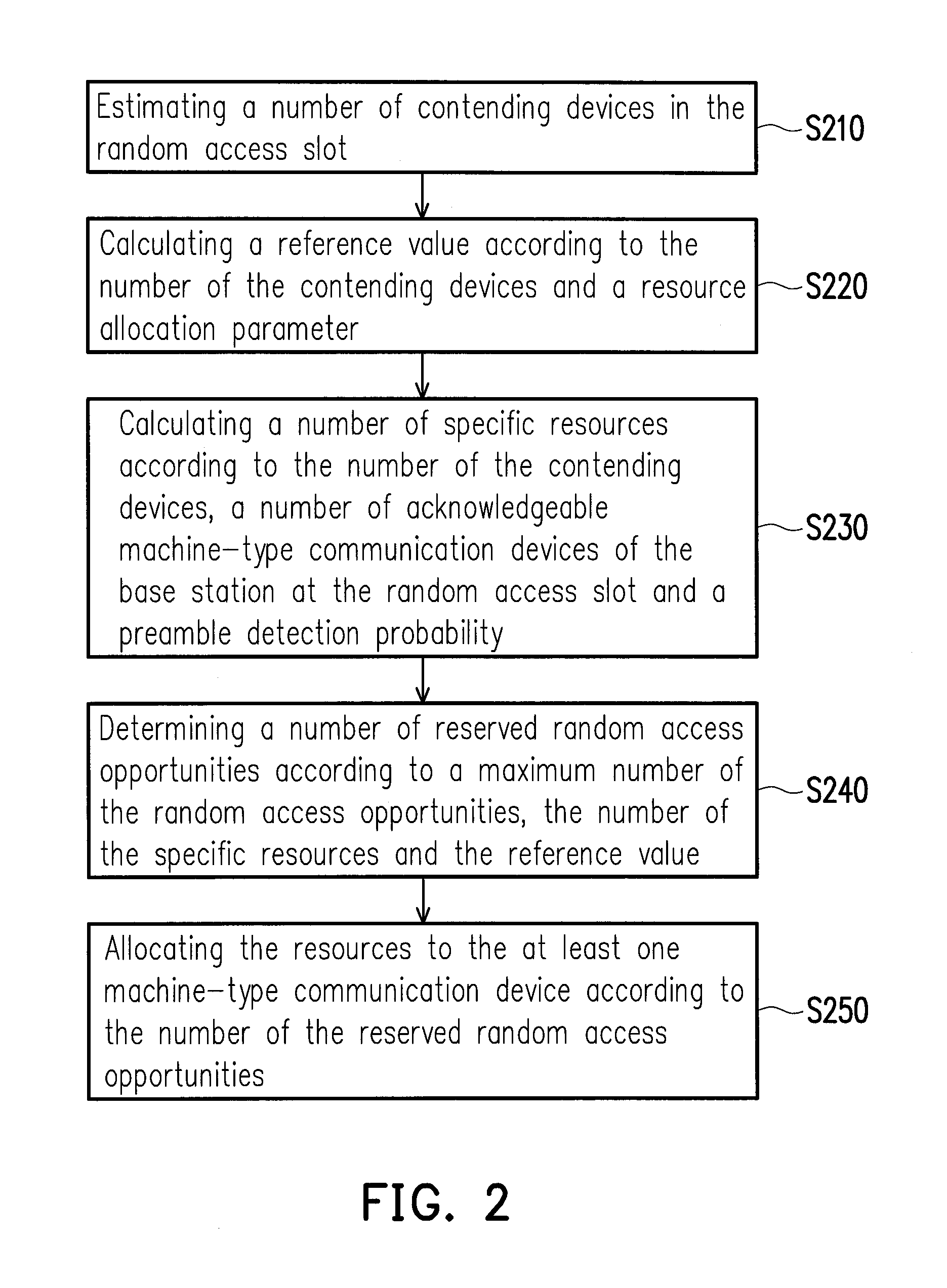Dynamic resource allocation method
a resource allocation and resource technology, applied in the field of resource allocation methods, can solve the problems of severe radio access network (ran) overload problem, large transmission load of highly dense devices supported by one cell, and congestion of signaling network
- Summary
- Abstract
- Description
- Claims
- Application Information
AI Technical Summary
Benefits of technology
Problems solved by technology
Method used
Image
Examples
Embodiment Construction
[0025]Some embodiments of the present application will now be described more fully hereinafter with reference to the accompanying drawings, in which some, but not all embodiments of the application are shown. Indeed, various embodiments of the application may be embodied in many different forms and should not be construed as limited to the embodiments set forth herein; rather, these embodiments are provided so that this disclosure will satisfy applicable legal requirements. Like reference numerals refer to like elements throughout.
[0026]FIG. 1 is a schematic diagram illustrating an MTC system according to an exemplary embodiment of the present invention. In the present embodiment, the MTC system 100 includes an MTC server 110, a serving gateway 120, a base station 130 (i.e., an eNodeB) and a plurality of MTC devices 140. The MTC devices 140 may belong to a cell 150 managed by the base station 130. The MTC devices 140 may be partitioned into a plurality of communication groups G1-GK ...
PUM
 Login to View More
Login to View More Abstract
Description
Claims
Application Information
 Login to View More
Login to View More - R&D
- Intellectual Property
- Life Sciences
- Materials
- Tech Scout
- Unparalleled Data Quality
- Higher Quality Content
- 60% Fewer Hallucinations
Browse by: Latest US Patents, China's latest patents, Technical Efficacy Thesaurus, Application Domain, Technology Topic, Popular Technical Reports.
© 2025 PatSnap. All rights reserved.Legal|Privacy policy|Modern Slavery Act Transparency Statement|Sitemap|About US| Contact US: help@patsnap.com



